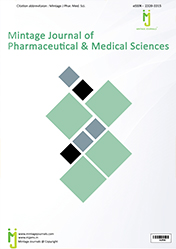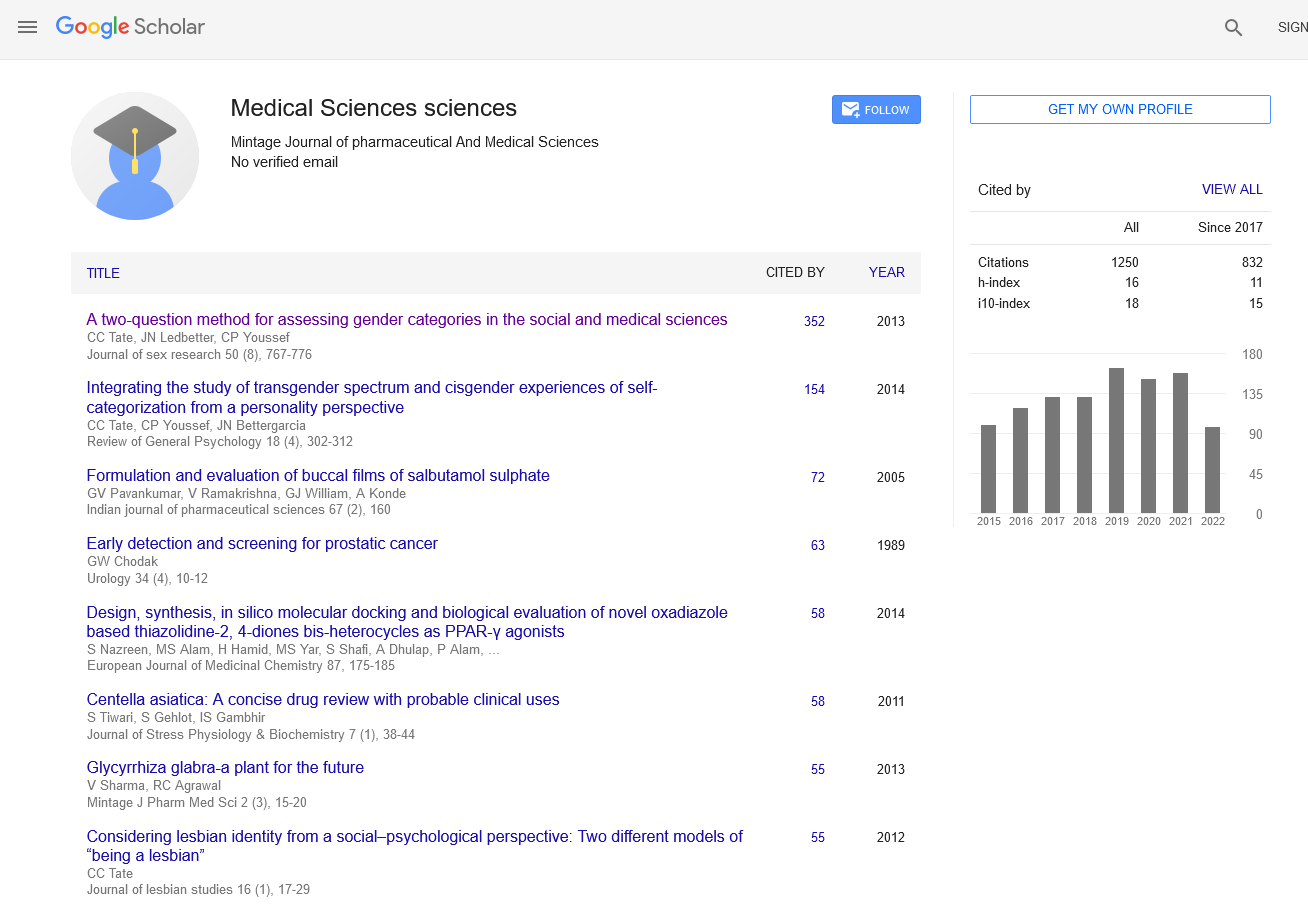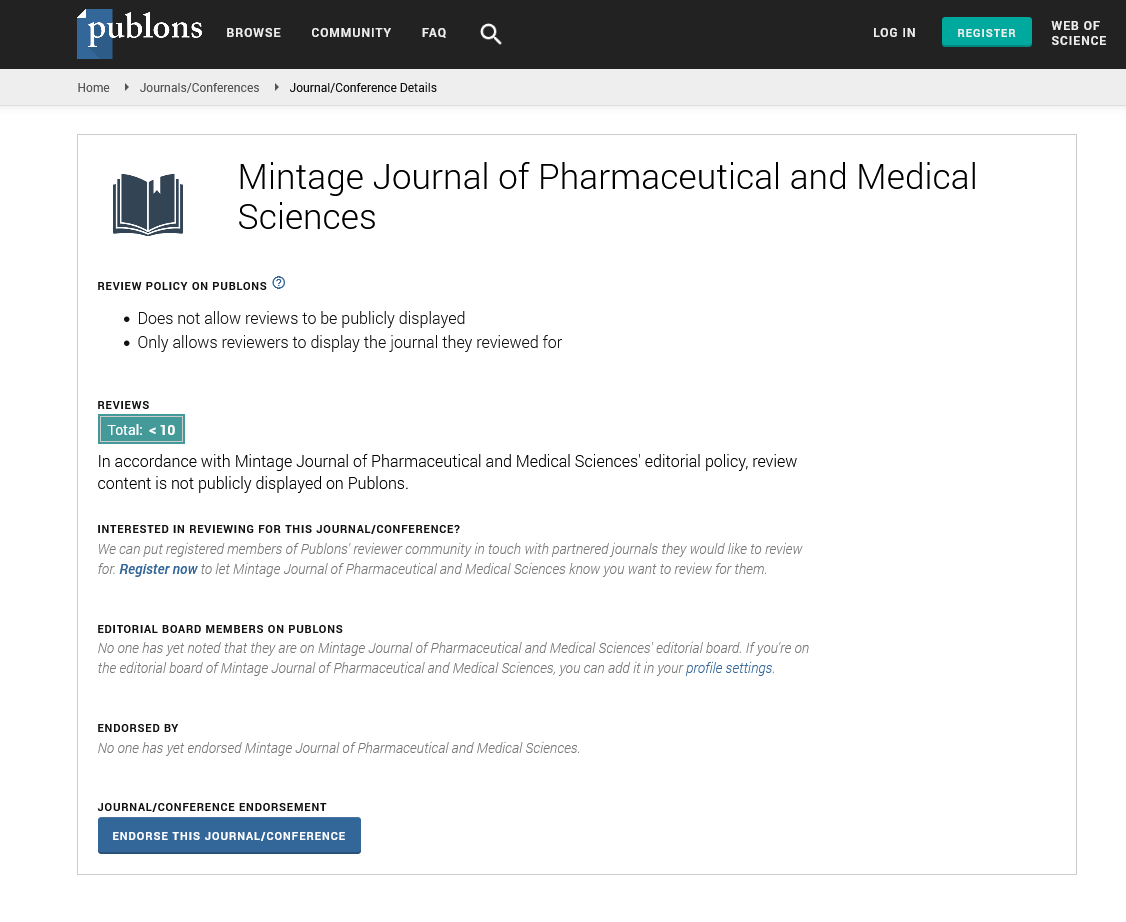**Natural Drug Extraction: From Plants to Pharmaceuticals**
Commentary - (2024) Volume 13, Issue 3
Description
The extraction of natural drugs is a fundamental process in pharmaceutical development, particularly in the discovery and production of medications derived from plants, microorganisms, and other biological sources. Natural products have long been a valuable resource for drug discovery, with many of today’s most effective medications originating from compounds found in nature. The extraction process is a critical step in isolating and purifying these active ingredients, ensuring they can be used safely and effectively in medical treatments. The process of natural drug extraction begins with selecting the appropriate biological source, which could be a plant, microbe, marine organism, or other natural material. Historically, plants have been the primary source for natural drug extraction, providing a wealth of medicinal compounds such as alkaloids, flavonoids, terpenoids, and glycosides. The first step involves identifying which part of the plant contains the desired compound, which could be the leaves, roots, seeds, or flowers. For example, morphine is extracted from the poppy plant’s seed pods, while paclitaxel, a chemotherapy agent, is derived from the bark of the Pacific yew tree. Once the biological material is collected, it undergoes a series of pre-extraction processes to prepare it for extraction. This preparation typically includes drying, grinding, or pulverizing the plant material to increase the surface area for better extraction efficiency. Drying is a critical step because it helps reduce the moisture content, preventing the degradation of the active compounds and ensuring a more concentrated extract. Grinding the dried material into fine particles also facilitates solvent penetration during extraction. The extraction process itself involves separating the active compounds from the raw material using various solvents or extraction methods. There are several techniques commonly used in natural drug extraction, each with its advantages and specific applications. Solvent extraction is one of the most widely used methods, involving the use of solvents like ethanol, methanol, or water to dissolve the active compounds. The choice of solvent depends on the chemical nature of the target compound and its solubility. Non-polar solvents, such as hexane, are used to extract non-polar compounds like essential oils, while polar solvents, like water or ethanol, are effective for polar compounds like alkaloids and glycosides. In solvent extraction, the plant material is soaked or macerated in the solvent for a period of time, allowing the active compounds to dissolve into the liquid. After extraction, the solvent is evaporated, leaving behind the concentrated extract containing the desired compounds. This crude extract may contain a mixture of active ingredients and other plant constituents, requiring further purification to isolate the specific drug molecule. Another common method is steam distillation, which is primarily used for extracting volatile compounds like essential oils from aromatic plants. In this process, steam is passed through the plant material, causing the volatile oils to evaporate. The steam and evaporated oils are then condensed and separated, yielding pure essential oils that can be used for their medicinal or therapeutic properties. Essential oils like eucalyptus, lavender, and peppermint are widely used in pharmaceuticals and alternative medicine. Supercritical fluid extraction (SFE) is a more modern and efficient method that uses supercritical fluids, usually carbon dioxide (CO2), to extract natural compounds. In its supercritical state, CO2 behaves like both a gas and a liquid, allowing it to penetrate the plant material and dissolve the target compounds. This method is particularly advantageous for extracting sensitive compounds that may degrade under high temperatures used in traditional solvent extraction. SFE is also considered environmentally friendly because it eliminates the need for organic solvents, making it a cleaner and more sustainable option. Following extraction, the crude extract undergoes purification to isolate the active compound from other unwanted materials. This can be done through techniques like chromatography, crystallization, or filtration. Chromatography is widely used in pharmaceutical research to separate individual compounds based on their size, charge, or polarity. Once isolated, the pure compound is characterized and tested for its biological activity, toxicity, and potential therapeutic applications. Natural drug extraction is not limited to plant sources; microbial fermentation is another critical process for obtaining bioactive compounds. Antibiotics like penicillin and streptomycin, for instance, are produced through the fermentation of specific bacterial or fungal strains. In this process, microorganisms are cultured in large fermentation tanks, where they produce secondary metabolites that can be isolated and purified as drugs. These microbialderived drugs have revolutionized medicine, particularly in treating bacterial infections and cancer. While the extraction of natural drugs offers many benefits, it is not without challenges. The availability of raw materials can be limited, especially when dealing with endangered plants or rare species. Additionally, the concentration of active compounds in natural sources can vary depending on factors like the time of harvest, geographical location, and environmental conditions. Standardization of extracts is crucial to ensure consistent quality and efficacy in pharmaceutical products. In conclusion, the extraction of natural drugs is a complex and essential process in drug discovery and development. Whether derived from plants, microorganisms, or other natural sources, the ability to isolate and purify bioactive compounds has led to some of the most important medical advancements. As scientific techniques continue to evolve, natural drug extraction remains a vital part of the pharmaceutical industry, providing a pathway to new and innovative treatments for a wide range of diseases.
Acknowledgement
The authors are very thankful and honoured to publish this article in the respective Journal and are also very great full to the reviewers for their positive response to this article publication.
Conflict Of Interest
We have no conflict of interests to disclose and the manuscript has been read and approved by all named authors.
Author Info
Samary Derk*Received: 02-Sep-2024, Manuscript No. mjpms-24-147872; , Pre QC No. mjpms-24-147872 (PQ); Editor assigned: 04-Sep-2024, Pre QC No. mjpms-24-147872 (PQ); Reviewed: 18-Sep-2024, QC No. mjpms-24-147872; Revised: 23-Sep-2024, Manuscript No. mjpms-24-147872 (R); Published: 30-Sep-2024, DOI: 10.4303/2320-3315/236024
Copyright: © This article is an open access article distributed under the terms and conditions of the Creative Commons Attribution (CC-BY) license (http://creativecommons.org/licenses/by/4.0/)

ISSN: 2320-3315
ICV :81.58

